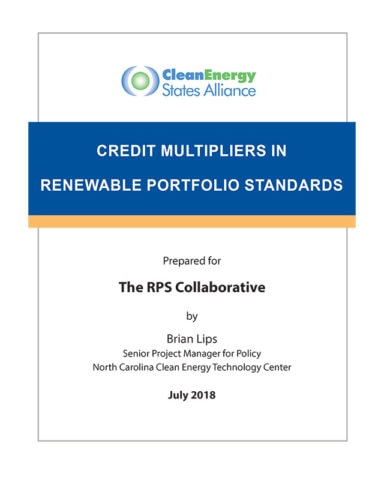Credit Multipliers in Renewable Portfolio Standards
Brian Lips (North Carolina Clean Energy Technology Center) for CESA
Renewable Portfolio Standards (RPS) are a proven policy tool for increasing the deployment of renewable energy. If an RPS only has a single undifferentiated target for electricity suppliers to meet, economic factors could cause compliance to be met through a small number of large renewable energy installations. Policymakers hoping to promote a more diverse resource mix in their states have sometimes augmented their RPS policies with various carrots and sticks to encourage the development of technologies and applications with more challenging economics (e.g. behind-the-meter or community-scale renewables).
The most popular mechanisms for targeting specific technologies or applications are RPS carve outs and credit multipliers. A carve-out serves as a subset of a larger RPS, requiring a certain percentage of the overall requirement to be met with a specific technology or application. Credit multipliers, on the other hand, award more than one (or less than one) renewable energy certificate (REC) for electricity produced by certain technologies or applications.
Of the 29 states with an RPS, 21 states plus DC have adopted a credit multiplier, a carve-out, or both as of June 2018. An additional three states with non-binding goals for renewable energy development include credit multipliers or carve-outs. In total, 38 credit multipliers have been adopted across 15 states plus DC since 1996. Eight of these states have both a credit multiplier and a carve-out.
This report examines the history and status of credit multipliers, the types of technologies and applications most often awarded credit multipliers, the advantages and disadvantages of credit multipliers, state experiences with the use of multipliers, and other trends in the implementation of credit multipliers.

